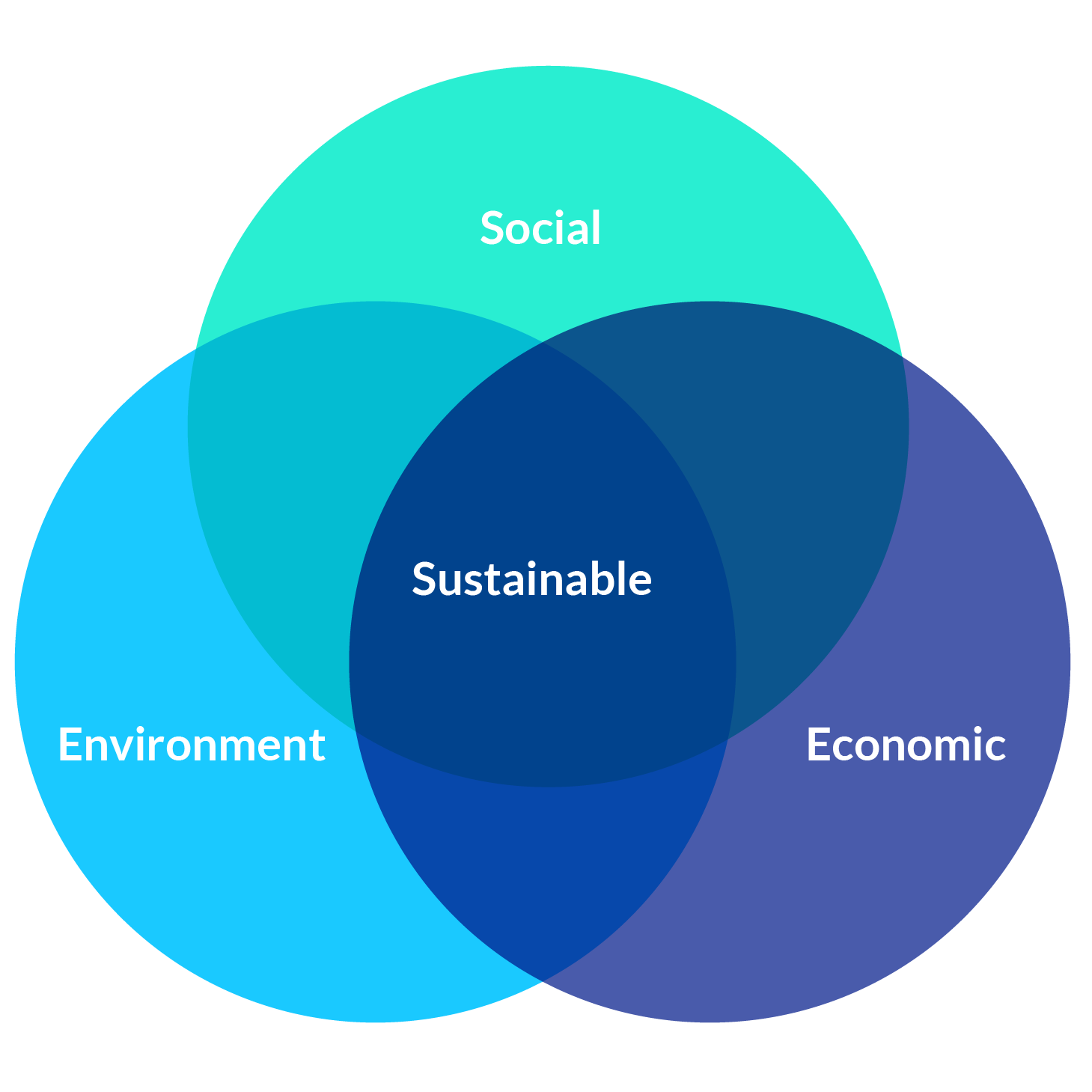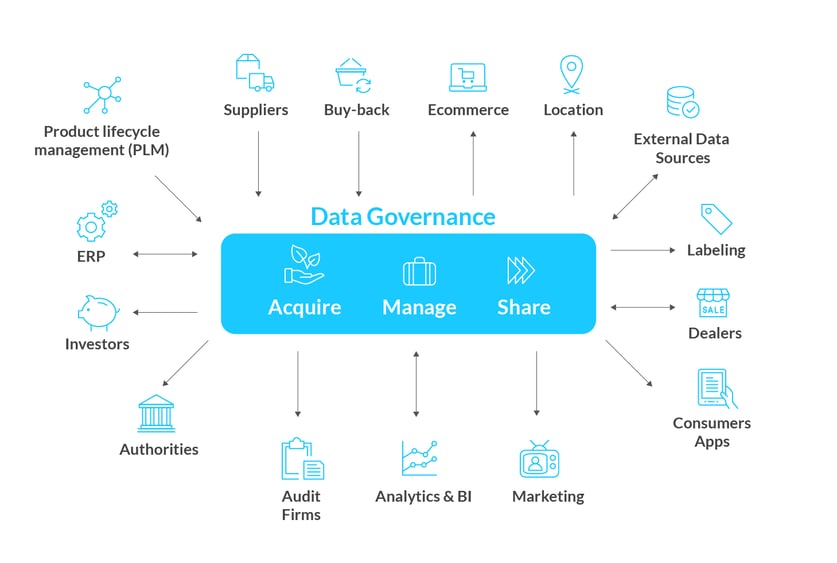As consumers place a larger emphasis on sustainable practices, many businesses are actively seeking ways to mitigate their environmental impact. Buyers are using their purchasing power to convey their preferences, with two-thirds willing to pay more for sustainable products. And this sentiment is gaining momentum, particularly among younger generations, with 75% of Gen Z prioritizing sustainability values when making purchasing decisions.
Beyond meeting evolving consumer preferences, companies that adopt sustainable practices can also reap benefits like operational efficiency, cost savings, and reduced risks associated with non-compliance and potential legal consequences. Also, promoting transparency and ethical practices can help businesses build customer trust, improve the customer experience, and increase customer retention.
But to communicate your commitment to sustainability without overloading your team, it’s crucial to have a centralized repository of product information. That’s where a Product Information Management (PIM) solution comes into play. A PIM system allows you to easily store, manage, and distribute product information across all your sales channels. The result? Your customers gain access to complete, accurate, and compliant information at every touchpoint to help them make informed choices.
Let's delve into the meaning of product sustainability, its role in today's business environment, and how PIM can help businesses streamline their messaging.
What does product sustainability encompass?
Product sustainability involves making mindful decisions across a product's lifecycle to minimize environmental, social, and economic impacts. This includes avoiding nonrenewable resources as well as products and practices that harm the environment. By integrating these principles, product sustainability seeks to create goods that are environmentally responsible, socially ethical, and economically viable.
Transparent communication and labeling can help consumers make informed choices, while regulatory compliance ensures adherence to established sustainability standards. This is especially relevant considering that 70% of consumers want to know what brands are doing to address social and environmental issues. Ultimately, product sustainability is a holistic endeavor that takes into consideration environmental concerns along with economic development.
The 3 pillars of sustainability
Sustainability is often broken into three intertwined categories: social sustainability, economic sustainability, and environmental sustainability.
- The social pillar: Ensuring fair labor practices, human rights, and community well-being are at the forefront of social sustainability. It involves creating an inclusive and supportive work environment, promoting diversity and inclusion, and creating an environment where individuals can prosper.
- The economic pillar: Economic sustainability entails maintaining a profitable and thriving business model that generates long-term value while considering the impacts on stakeholders and the economy. This implies efficient resource allocation, ethical business practices, and responsible financial management.
- The environmental pillar: Brands can reduce their ecological footprint by adopting practices that minimize resource consumption, waste generation, pollution, and energy usage. This means incorporating eco-friendly technologies, reducing emissions, and implementing sustainable resource management.

The 3 pillars of sustainability
Centralizing sustainability data with PIM
Companies have a lot of business-critical data: information on products and assets, as well as supplier and stakeholder data. Keeping this data clean and organized can be time-consuming, especially when it comes to a new subset of data receiving increased attention: sustainability data. This subset has many sources and formats which means collecting, storing, and distributing even more product data across all your channels. To effectively convey your sustainability efforts, you need a single source of product information. This is where a PIM solution becomes crucial.
PIM acts as a centralized hub where sustainability data converges, is organized, enriched, and then distributed to enable transparent communication with consumers, stakeholders, and regulatory bodies. With 81% of shoppers wanting businesses to be environmentally conscious in their advertising and messaging, this centralized approach provides all the information customers need to make informed choices. It enhances operational efficiency and ensures data accuracy while fostering brand loyalty.
Imagine a cosmetics brand that is committed to sustainability. With a PIM system, it can integrate sustainability information into product listings on its website and other channels, along with eye-catching visuals showcasing eco-friendly packaging and ethical production. The brand can effectively communicate its sustainability strategy by providing comprehensive data on ingredient sourcing, packaging materials, and cruelty-free practices for each product.

Centralizing sustainability data with PIM
Step up to new sustainability standards with PIM
Web 3.0, cryptocurrency, enhanced connectivity, and sustainability trends are revolutionizing the shopping experience. In this changing environment, a robust PIM system becomes your compass. By highlighting your values and using product information to curate exceptional experiences, you can boost consumer confidence and facilitate purchasing decisions. Plus, PIM streamlines the process of updating and distributing this vital information across all your channels.
A cloud-based PIM offers huge storage capabilities, enabling you to store, manage, and distribute all sorts of media files that show your green credentials. Everything from images and videos to documents showing regulatory compliance and industry-standard certifications. By incorporating detailed information about materials, sourcing practices, production methods, and environmental impact, companies can showcase their efforts to consumers and stakeholders.
Here are some of the advantages that businesses can reap by leveraging PIM for their product sustainability initiatives:
- Centralized data
PIM provides a unified repository for all sustainability-related data, streamlining information storage and access. This centralization ensures that up-to-date and accurate information is readily available to various teams and stakeholders.
- Collaboration and accessibility
PIM allows remote access and collaboration, enabling geographically dispersed teams, suppliers, and partners to contribute and access sustainability data. This accessibility promotes seamless communication and coordination, facilitating a collective approach to sustainability.
- Real-time updates
PIM systems offer real-time updates, ensuring that sustainability information is always current. This dynamic feature helps businesses stay agile and responsive to changing requirements, regulations, and consumer demands.
- Scalability and flexibility
A cloud-based PIM offers scalability to accommodate growing volumes of data. As businesses expand their sustainability initiatives, PIM can easily adapt to handle increased data without the need for significant infrastructure changes.
- Reduced environmental impact
By leveraging cloud infrastructure, companies can reduce their own IT hardware requirements, leading to lower energy consumption and a smaller carbon footprint. This aligns with sustainability goals by minimizing resource usage.
- Efficient data management
Sustainability data is not a singular data domain; it must be extracted from diverse sources such as suppliers, product information, financial data, location data, etc. PIM systems automate this process, reducing manual effort and freeing up valuable resources.
- Reduced product returns
PIM allows companies to provide customers with more accurate and complete information about the products they buy. This reduces the number of times customers send products back for a refund, preserving resources and reducing waste in processing returns.
Create sustainability reporting standards using PIM
Sustainability standards promote accountability, transparency, and responsible business practices, and they often align with global initiatives like the United Nations Sustainable Development Goals (SDGs), the Global Reporting Initiative (GRI), and other industry-specific guidelines. Establishing sustainability reporting standards with PIM involves a systematic approach to enhance an organization's sustainable initiatives. The process includes the following key steps:
- Communicating sustainability features and certifications
Incorporating sustainability information into a PIM system allows businesses to highlight the eco-friendly aspects of their products. This includes detailing certifications such as organic, fair trade, or cruelty-free, along with specific features of energy efficiency, recyclability, or renewable materials. PIM centralizes this data, ensuring consistent messaging across all product listings and marketing channels.
- Providing raw material sourcing information
PIM systems play a pivotal role in documenting and sharing details about the sourcing of raw materials used in products. Businesses can track and share the origin of materials, whether they are responsibly harvested, sustainably cultivated, or ethically sourced. This transparency reinforces the brand's commitment to sustainable practices.
- Delivering data about reduced carbon footprint via local sourcing
With a centralized PIM solution, organizations can capture, store, and manage intricate details related to the geographic origin of raw materials, manufacturing processes, and supply chain logistics. Businesses can showcase their commitment to sustainability by highlighting products that are sourced and produced locally, thus minimizing transportation-related carbon emissions.
Cloud-based PIM systems: A green approach to data management
Adopting a cloud-based PIM system often provides a more sustainable approach than an on-premises setup. Cloud infrastructure benefits from energy-efficient data centers and advanced resource management. By leveraging the cloud's scalability, organizations can dynamically allocate computing power and storage resources as needed, avoiding the inefficiencies of maintaining surplus on-premises infrastructure. Additionally, the remote accessibility of SaaS PIM promotes collaboration without the need for extensive travel, reducing the carbon footprint associated with commuting and office space usage. These practices contribute to a more ecologically balanced IT solution.
Embracing product sustainability for a resilient future
Consumers across all generations — from Baby Boomers to Gen Z — are now willing to spend more on sustainable products. Yet less than 20% of retailers are on track to meet various sustainability targets. For long-term viability, businesses must align themselves with the global shift towards sustainability— ensuring customers understand the environmental impact of their purchases but also reinforcing their brand’s commitment to this cause.
Why does this matter? Sustainability is not just a buzzword. An overwhelming 90% of business leaders think sustainability is important. As a result, most firms today have at least a basic sustainability strategy. In the tide of heightened eco-consciousness, implementing a PIM solution extends beyond strategic planning; it becomes a commitment to industry leadership and the customer experience. Empower your brand to be a catalyst for sustainable change, meeting product sustainability requirements and helping your customers make informed buying decisions.






